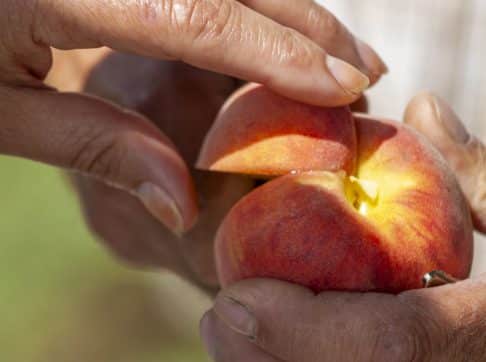Principles tell us how to act.
Seven principles shape our vision and encompass the change we want to make.
Address the integrity of natural and social resources that are the foundation of a healthy planet and future generations in the face of changing global and local demands.
Our food systems must be renewable so that the natural and social systems that we rely on and that have regenerated over thousands of years continue to do so. This means that food is produced, processed, and consumed in adequate quality and quantity while protecting both food cultures, traditions, and practices, as well as protecting the intrinsic value and integrity of natural resources including land, soils, water, seas, biodiversity and seeds, livestock, pollination, and other natural resources through preservation, conservation, restoration, regulation, and responsible management and use.
Address the integrity of natural and social resources that are the foundation of a healthy planet and future generations in the face of changing global and local demands.
Our food systems must be renewable so that the natural and social systems that we rely on and that have regenerated over thousands of years continue to do so. This means that food is produced, processed, and consumed in adequate quality and quantity while protecting both food cultures, traditions, and practices, as well as protecting the intrinsic value and integrity of natural resources including land, soils, water, seas, biodiversity and seeds, livestock, pollination, and other natural resources through preservation, conservation, restoration, regulation, and responsible management and use.
Support regenerative, durable, and economically adaptive systems in the face of a changing planet.
Our food systems must be resilient so that they can both mitigate and adapt – especially in light of extreme weather, economic shocks, and social disruption. This means that food is produced, processed, and consumed in adequate quality and quantity as part of a stable and sustainable system, not contributing to increasing climate challenges. Through intensifying soil microbial activity, restoring soil quality, increasing soil fertility, reducing dependency on fossil fuel through sustainable use of locally available resources, protecting agricultural biodiversity, and more, resilient food systems open up more climate adaptation and mitigation opportunities. Our food systems must also nurture resilient human systems and social capital, keeping alive the values, traditions, experience.
Promote sustainable livelihoods and access to nutritious and just food systems for all.
Our food systems must be equitable so that no one is left behind and so that those upon whom our food systems depend – especially women and smallholders – have the ability to achieve a decent livelihood and food security. This means that we must work to: eliminate poverty; ensure our food systems continue to provide jobs to the 1.6 billion smallholder farmers in need of fair employment; and ensure local communities’ control over the means of production, such as opportunities to land, to production subsidies, to capital, and to control over their own spiritual and material relationships to their lands and nature.
Value our rich and diverse agricultural, ecological, and cultural heritage.
Our food systems must be diverse so that we protect and conserve the rich agricultural biodiversity of fishing grounds, forests, water bodies, aquatic organisms, pastoral lands, migratory routes, and plant and animal genetic resources and medicines, including crops, seeds, livestock breeds, and their wild relatives. As well, it means not just protecting and conserving agricultural biodiversity but also upholding diversity in healthy diets, markets, technology, and in local knowledge processes, traditions, and cultural heritage – all as pathways conducive to resilience and better farmer livelihoods, consumer well-being and health, and environmental protection.
Advance the health and well-being of people, animals, the environment, and the societies that depend on all three.
Our food systems must deliver health for all – human health, animal health, environmental health, and community health. This means that all forms of malnutrition are eliminated through access to safe, nutritious, diverse, and affordable food now and for future generations. It means ensuring that every actor in the food system – from production to processing to consumption – is protected from food production-related occupational hazards and environmental contamination such as air and water pollution and pesticide contamination. As well, it means nurturing food’s role in providing social, familial, and cultural meaning.
Ensure meaningful and authentic engagement of diverse people and organizations in transparent deliberations, shared power, democratic decisions, and collective actions affecting food systems for the public good.
Our food systems must be inclusive of all those who produce, process, and consume food in rural and urban areas, in poor and wealthy countries. This means that global governance is built on democratic principles, shared power, and inclusive participation, that decision-making is democratic, including the participation of food producers and constituencies most affected by hunger and malnutrition, and that in deliberations concerning the future of food, diverse people and organizations are engaged in transparent and authentic ways.
Understand the implications of the interdependence of food, people, and the planet in a transition to more sustainable food systems.
Our food systems must be interconnected. We must understand the interdependencies within the system, recognizing the complex web of dynamics and interactions between parts of the system. It means watching for, making sense of, and interpreting the implications of things that are interconnected in the global system. We must think beyond nation-states, sector siloes, and narrowly identified issues and see the interconnections between the global and local, the macro and the micro, and the relationships between worldwide patterns and area-specific challenges.
Principles for Food Systems Transformation | A Framework for Action


